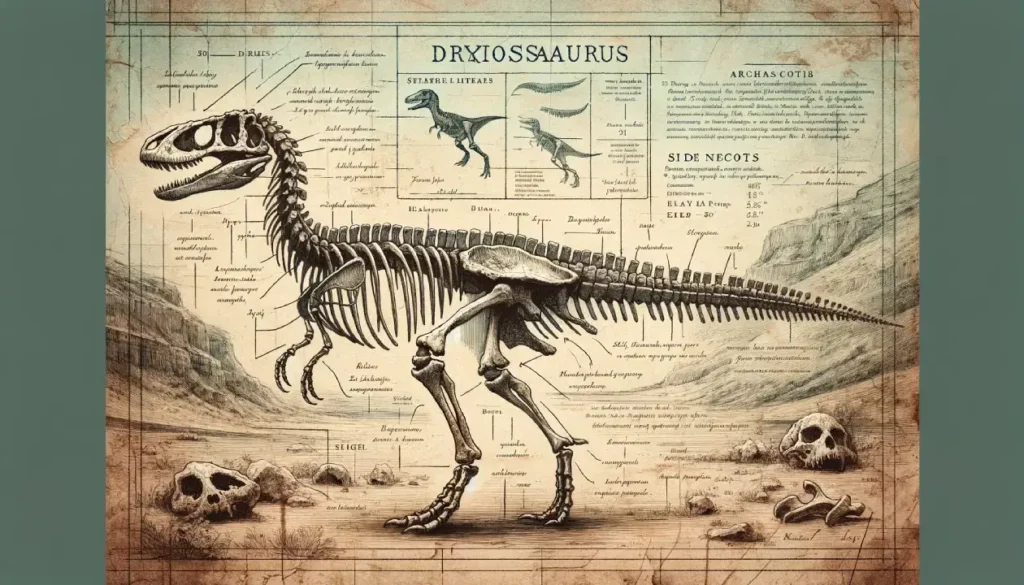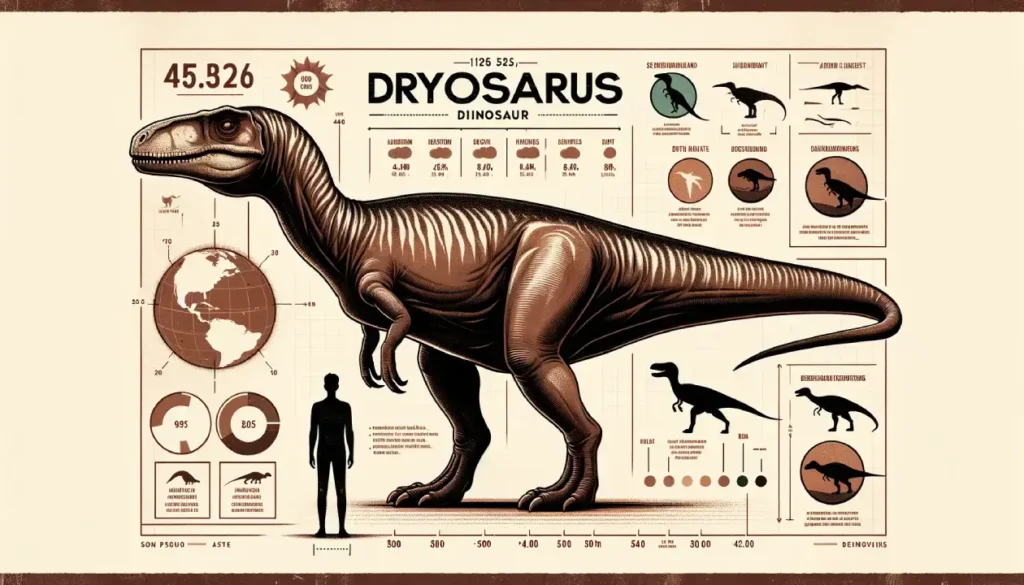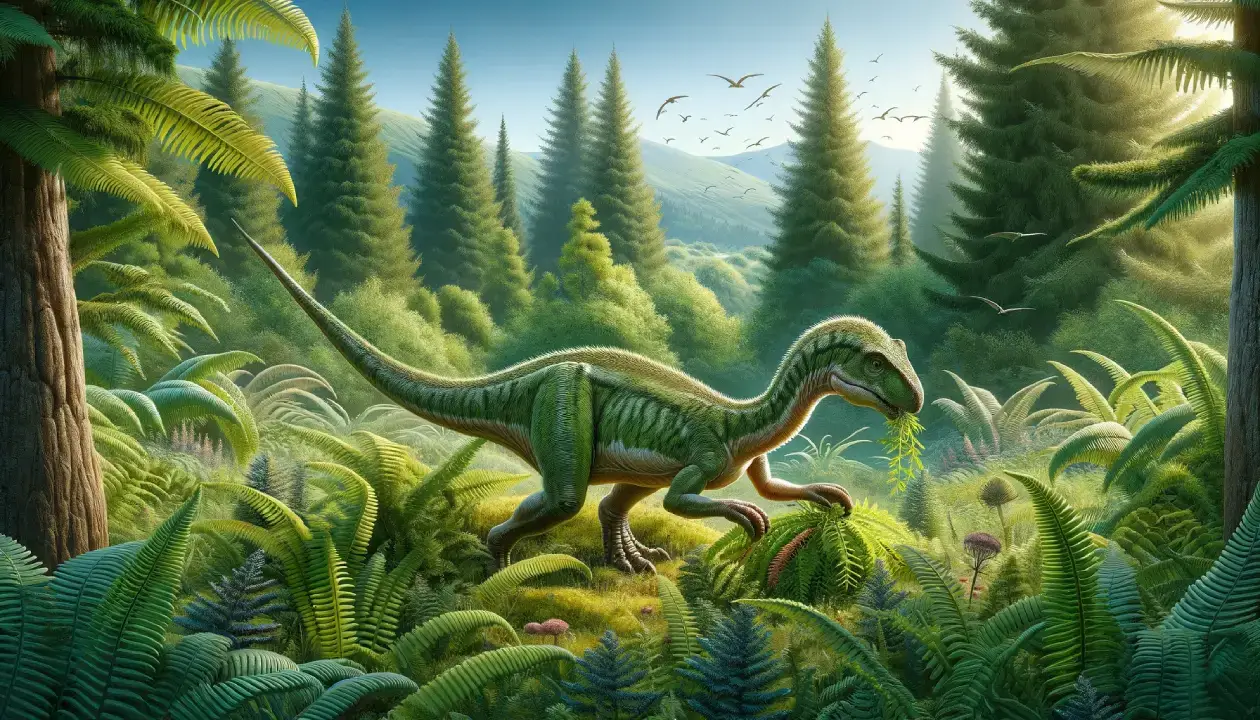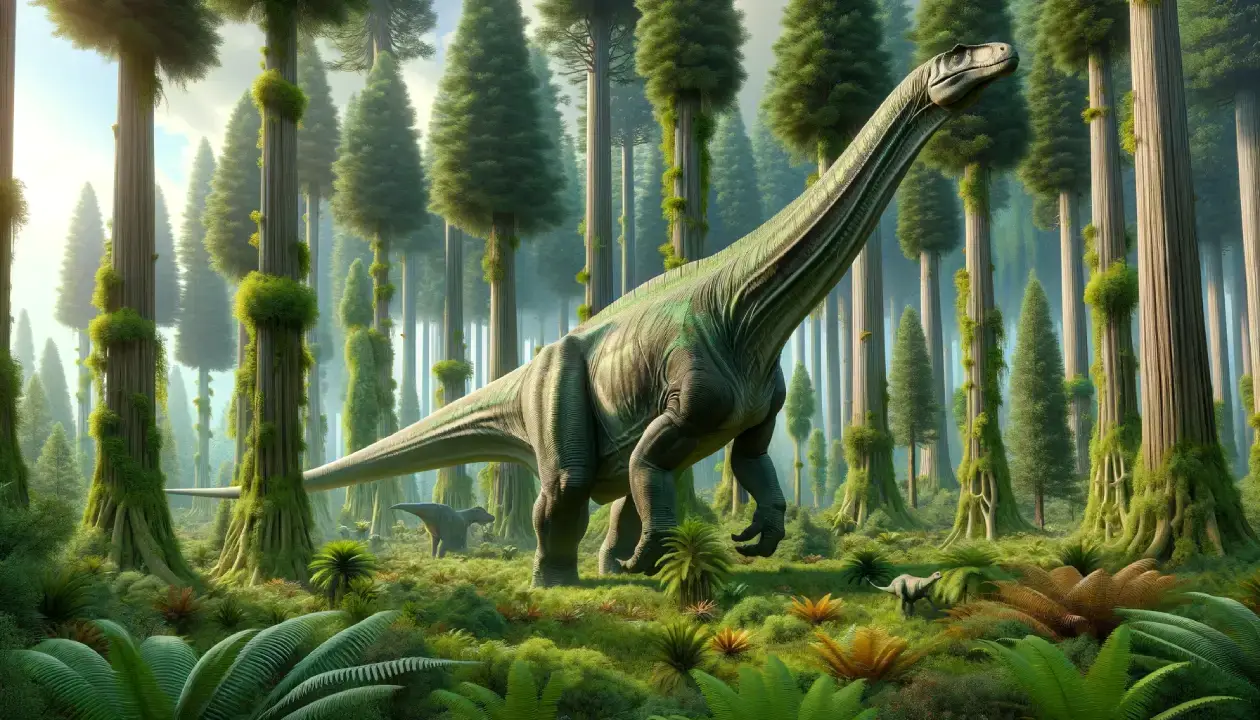Dryosaurus was a small ornithopod dinosaur that lived in western North America during the Late Jurassic period, about 150 million years ago. It was one of the first dinosaurs scientifically investigated from the United States, and had a relatively complete skull. It had a long neck, long legs and a stiff tail.
Basic Information
| Feature | Details |
| Time Period | Late Jurassic (156 – 145 million years ago) |
| Diet | Herbivore |
| Length | 2.4 – 4.3 meters (8 – 14 feet) |
| Weight | 77 – 91 kilograms (170 – 200 pounds) |
| Size | Small |
| Posture | Bipedal |
| Locations | USA and Tanzania |
| Continent | North America and Africa |
| Type | Ornithopod |
| Habitats | Forests and plains |

Description of Dryosaurus
Historical Context
Dryosaurus, meaning “oak lizard”, is a genus of dinosaur that belonged to the group of ornithopods, which were small to medium-sized bipedal herbivorous dinosaurs. It was named by Othniel Charles Marsh in 1894, based on a partial skeleton found in Wyoming. The name refers to its presumed forest-dwelling lifestyle, not to the shape of its teeth as is sometimes assumed. Several species of Dryosaurus have been named, but only one is widely accepted: D. altus. Other species, such as D. canaliculatus and D. lettowvorbecki, have been reassigned to different genera, such as Valdosaurus and Dysalotosaurus.
Physical Attributes
Dryosaurus was a small dinosaur, measuring about 2.4 to 4.3 meters in length and weighing about 77 to 91 kilograms. It had a slender body with two long legs and a long tail. Its head was large and flat, with a beak-like mouth and long, pointed teeth. Its most distinctive feature was its large eyes, which gave it good vision and may have helped it detect predators or danger from afar. It had short arms with five fingers each, which it could use to grasp food or support itself when resting.

Feeding Habits
Dryosaurus was a herbivore that fed on low-growing plants and shrubs. It used its beak to snip off branches and leaves and its teeth to strip and grind them. It had a large gut that could digest tough plant material. It may have also swallowed stones to help with digestion, as some gastroliths (stomach stones) have been found associated with its fossils. Dryosaurus may have lived in herds or groups for protection and social interaction.
Unique Features
One of the unique features of Dryosaurus was its speed and agility, which made it one of the fastest dinosaurs of its time. It had long and powerful hind legs with three-toed feet that ended in hoof-like claws. Its forelimbs were much shorter and less powerful than its hind legs, indicating that it was a bipedal dinosaur that primarily walked and ran on two legs. One of the most distinctive features of Dryosaurus was its long, narrow tail, which likely played a role in balancing the dinosaur as it ran.
Movement and Speed
Dryosaurus was a fast runner that could reach speeds of up to 40 kilometers per hour (25 miles per hour). It had good balance and coordination, thanks to its long tail that acted as a counterweight. It could also change direction quickly and easily, making it hard to catch by predators.
Cultural Impact
Dryosaurus has been featured in several books, movies, games and toys as one of the most recognizable ornithopods. It has appeared in popular media such as Jurassic Park, The Land Before Time, Dinosaur Train, and Disney’s Dinosaur. It has also been displayed in many museums around the world, such as the Carnegie Museum of Natural History in Pittsburgh, where a life-sized model of Dryosaurus is exhibited.

Interesting Facts
- Dryosaurus is related to other ornithopods such as Iguanodon, Camptosaurus, Hypsilophodon, and Othnielia. They are collectively known as bird-hipped dinosaurs.
- Dryosaurus may have had sexual dimorphism or individual variation in its size and shape, as some specimens show different features of these structures.
- Dryosaurus lived alongside other dinosaurs such as Allosaurus , Diplodocus , Stegosaurus , and Ceratosaurus . They all inhabited the Morrison Formation, a rich fossil site in North America.
Related Dinosaurs
- Troodon : A small, feathered carnivore known for its speed and agility.
- Triceratops : A herbivore with three horns and a large frill, often considered the nemesis of the T-Rex.
- Brontosaurus : A massive, long-necked herbivore that towered over most other dinosaurs.






